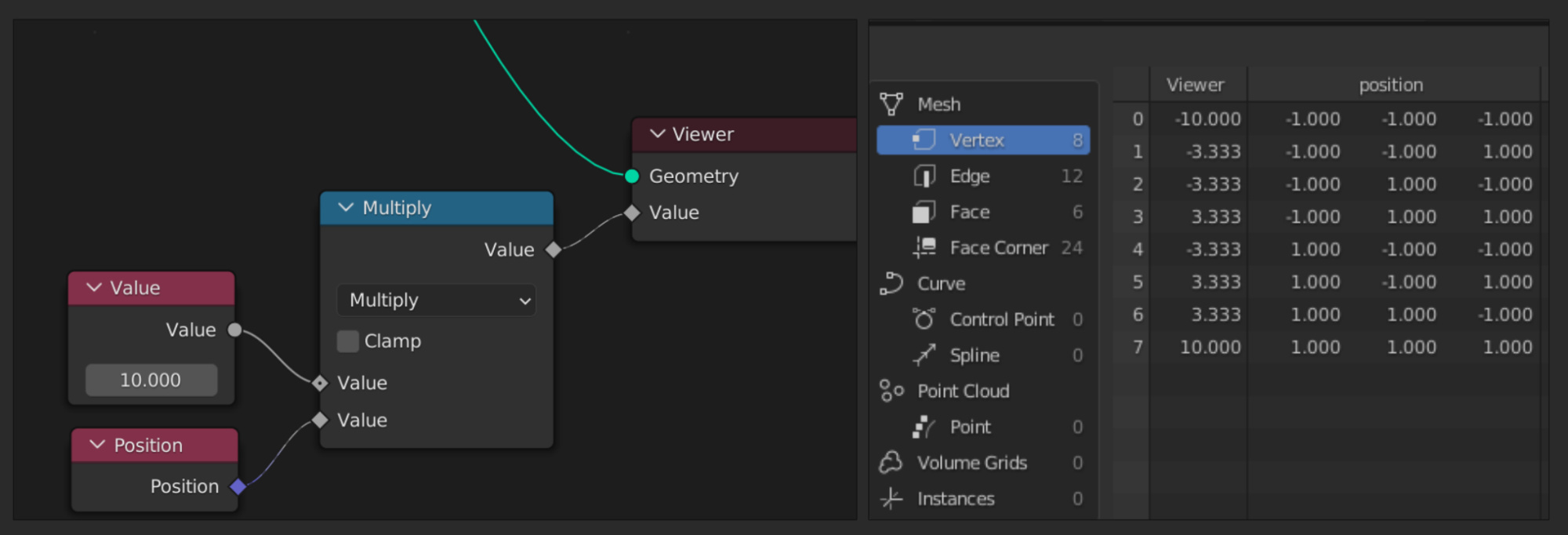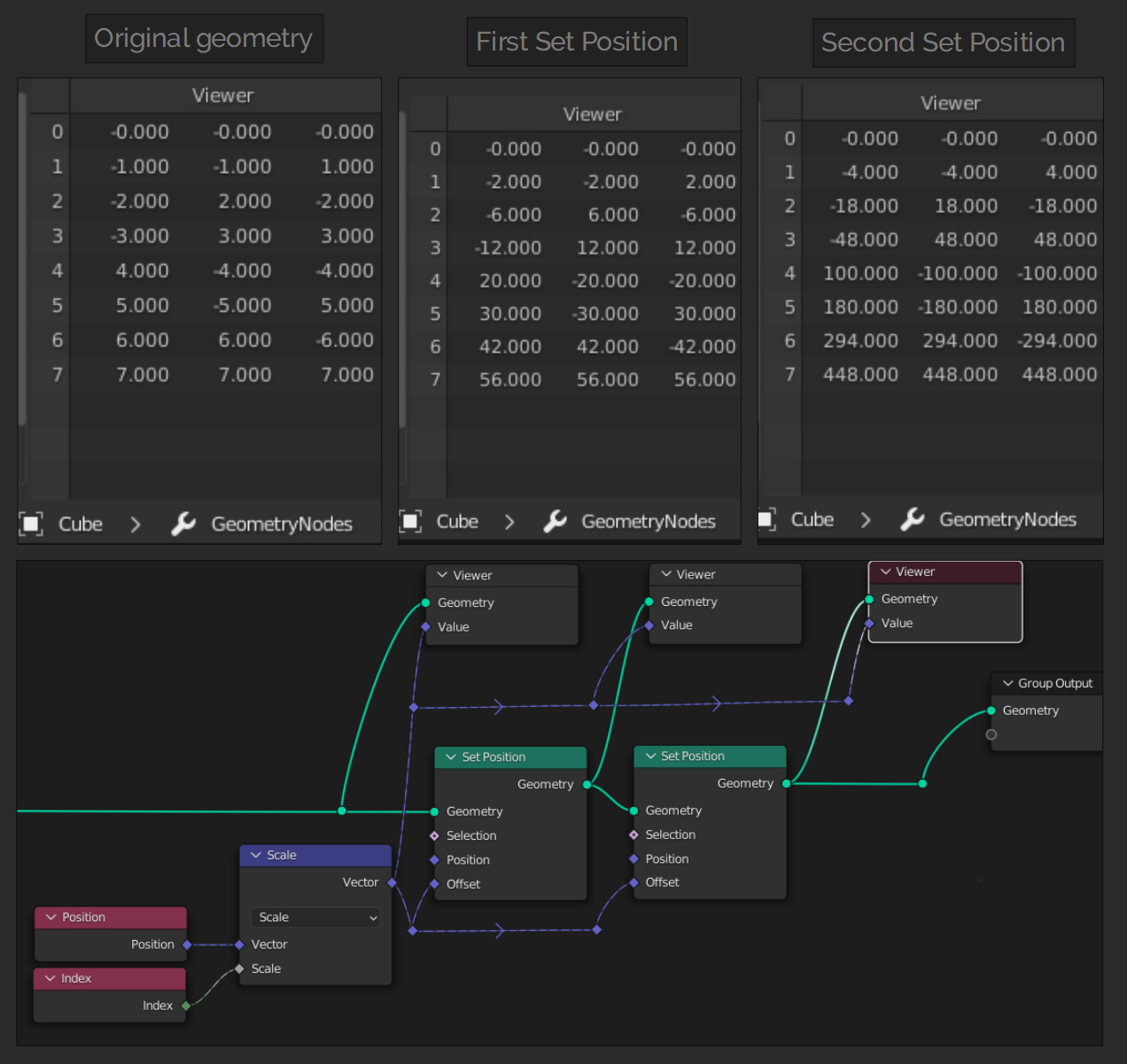Node input types

Circle: Accepts single values, outputs single values.
Diamond: Accepts fields or single, outputs a field.
Hovering over it with cursor shows field names used (if result is computed).
Diamond with dot: Can accept or output field, but is currently a single value (copied to all field rows and columns).
Hovering over it with cursor will show values.

Multiplying every position in a field by 10 yields strange results in the above screenshot; the Position field is a vector. The Math node only takes single value inputs and will average the each of the three vector components together, then multiply by 10.
To perform this operation correctly, use a Vector Math node instead.

Data evaluation order & context-dependent attributes

Attribute inputs are context-dependent: this means they are related to the geometry they're being used for.
In this example, the Set Position node travels backwards through the Offset input to determine the scale, using the input geometry's Position and Index attributes.
In this case, every point in the geometry is multiplied by the index.

In the second situation, the Attribute nodes are evaluated twice; note that the data isn't simply copied, but is actually calculated again with new data! The second Set Position node uses geometry already modified by the first Set Position node, and as such the backwards flow will use position data resulting from the first position operation.
This can be seen in the third screenshot.

Note that the Viewer node uses a Geometry input, as it needs a reference to the input data since the data output by the Scale node can differ depending on the context geometry.
To make sure that the same field values are used, a Capture Attribute node can be used to store a temporary copy (anonymous attribute) of the Attribute. In the example below, the Capture Attribute node stores the Position data from the original geometry and passes on its data (the output Geometry node should be used). why?
This data copy is then used for the Scale operation. Each time a Set Position node travels backwards to evaluate the Position attribute input, it'll encounter the copied data, which is the same every time, even if the geometry has changed in the meantime.

Attributes
Attributes are different types of data stored in object geometry. These are divided over different domains; i.e. the Mesh domain (vertices, edges, faces, face corners). Within these domains, different properties exist (such as position or normal).
Attributes exist as the data types of Input nodes (the red nodes shown above), as named attributes (built-in and custom), and anonymous attributes.
For a list of built-in named attributes, see the Blender Manual.